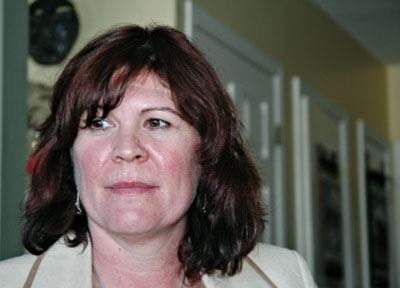A city food bank is in the works and Vonnie Lavers was in Whitehorse to help grease the wheels.
During her five years as the Kelowna Community Food Bank’s executive director, Lavers has faced a number of challenges.
The biggest is being female.
“We’ve slipped a little, as women,” said Lavers during a lunch talk at Victoria Faulkner Women’s Centre on Thursday.
“Women are still not offered the same wage men make,” she said.
“Women ask for less money than men, even when women have more skills.
“Usually men ask for $20,000 more than they’re worth and women ask for $20,000 less.”
Everyday Lavers watches women lining up for food outside her Kelowna office.
Single moms are a demographic that relies heavily on the food bank, she said.
Often coming from abusive relationships, women and children end up in shelters, at a loss.
With little or no self-esteem and self-confidence, these women have to start over, said Lavers.
“They have to change their views and realize that, yes, they can become contributing members of society.”
And in Kelowna, the food bank has helped, she said.
Besides giving healthy food to the hungry, the food bank offers a host of programs and services for the ill, the old, children, pregnant moms and students.
A community nurse offers advice to young and expecting mothers.
Lavers has set up courses for those wishing to expand their work skills, and the organization has teamed with the city and a multitude of other service providers who work together toward common goals.
Meeting every Friday morning to pick up groceries, take classes, or attend specialized programs, women can network and forge friendships.
“They can begin to feel they’re not alone,” said Lavers.
“And when they start working together, or taking classes, this education raises people out of poverty and lifts their self-esteem.”
But it’s not just women living in poverty who need to improve their self-esteem.
All women should ask for what they are worth, said Lavers.
“I earn money by the work I do, and I won’t accept less than I’m worth.
“I ask for it, and I get it.”
Besides running one of Canada’s most successful food banks, Lavers works as a consultant and spends a good deal of time lobbying the government to improve the lives of those living in poverty across Canada.
For the last 10 years, the Canadian government has been making decisions that increase poverty, she said.
In 1996 the federal government ended the Canada Assistance Plan, which guaranteed every citizen the right to an adequate income — thus giving provinces freedom to reduce welfare rates.
Employment Insurance rates were also reduced, while funding to new social housing was stopped.
And over the last three decades, both federal and provincial governments have failed to raise minimum wages to match inflation.
On November 24th, 1989 the House of Commons unanimously passed a resolution to eradicate child poverty in Canada by 2000.
Eighteen years later, and six years past the deadline, one in six Canadian children still live in poverty — one in four First Nations children.
“Every month 753,000 people use food banks in Canada,” said Lavers.
“And 40 per cent of them are children.”
Despite these glaring statistics, “poor-bashing” is still alive and well in Canada, she said.
Time and again, Lavers hears arguments that food banks enable “lazy” people to continue to sit on welfare.
But last year, only 30 per cent of those using the Kelowna Food Bank were on social assistance, she said.
“That means 70 per cent of the people we assisted were working poor, on disability, old age pension and student loans — these are not people who do not contribute to society.”
Creating a food bank is a step in the right direction, said Lavers.
But there are a number of questions that need to be answered before opening the door.
Who are the volunteers and how will they be recruited and retained?
Where will funding come from? And is it sustainable?
Where will the food come from and who will distribute it?
And is there community support?
The Whitehorse Food Bank Planning Project has been asking these questions for the last six months, and should have a plan in place by the middle of May.
Hired by the anti-poverty coalition to create a food-bank feasibility study, Peter Becker has been leading the project.
Past surveys show that people on social assistance don’t have enough food at the end of the month, said Becker in a past interview with the News.
“Housing costs are so high, people are left with literally pennies a day for food,” he said.
“And if you don’t pay rent, you don’t have a roof over your head.”
So, people choose to go hungry.
Becker estimates that there are several thousand people in Whitehorse who don’t get enough to eat.
“Our goal is to not have hungry people,” he said.
